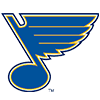The rankings continue with 10 of the 14 pitchers who earned 29 points on the DT scale. The top two pitchers were covered last episode as we looked at the pitchers who rounded out the top 60, with Tyler Glasnow and Joe Ross topping the list of 29-point players. Here's a quick review of the rankings:
Introduction to the ratings
Rating NFBC SP 1-10
Rating NFBC SP 11-21
Rating DT SP 22-30 (and 19)
Rating DT SP 31-40
Rating DT SP 41-50
Rating DT SP 51-60
Glasnow was the only pitcher in the 29-point group to earn as many as seven points in the strikeouts category, which played a big role in elevating to the head of the class to rank 59th overall. Here are a couple points of interest in today's rankings: only one pitcher in this group earns 5 points in the WHIP category - but he brings the caveat of an inefficient delivery; and there's only one pitcher who cracks 6 points on the assessment for stuff, and that guy is 28 years old yet has never pitched more than 121 innings in a season at the highest level.
James Paxton
NFBC ADP: 53
DT Rank: 61
| K | 6 of 10 |
| ERA | 3 of 6 |
| WHIP | 3 of 6 |
| W | 2 of 3 |
| IP | 5 of 10 |
| Stuff | 6 of 8 |
| Mechanics | 4 of 7 |
| TOTAL | 29 of 50 |
The rankings continue with 10 of the 14 pitchers who earned 29 points on the DT scale. The top two pitchers were covered last episode as we looked at the pitchers who rounded out the top 60, with Tyler Glasnow and Joe Ross topping the list of 29-point players. Here's a quick review of the rankings:
Introduction to the ratings
Rating NFBC SP 1-10
Rating NFBC SP 11-21
Rating DT SP 22-30 (and 19)
Rating DT SP 31-40
Rating DT SP 41-50
Rating DT SP 51-60
Glasnow was the only pitcher in the 29-point group to earn as many as seven points in the strikeouts category, which played a big role in elevating to the head of the class to rank 59th overall. Here are a couple points of interest in today's rankings: only one pitcher in this group earns 5 points in the WHIP category - but he brings the caveat of an inefficient delivery; and there's only one pitcher who cracks 6 points on the assessment for stuff, and that guy is 28 years old yet has never pitched more than 121 innings in a season at the highest level.
James Paxton
NFBC ADP: 53
DT Rank: 61
| K | 6 of 10 |
| ERA | 3 of 6 |
| WHIP | 3 of 6 |
| W | 2 of 3 |
| IP | 5 of 10 |
| Stuff | 6 of 8 |
| Mechanics | 4 of 7 |
| TOTAL | 29 of 50 |
The problem is that his breakout season involved a 3.79 ERA with a 1.31 WHIP in just 121.0 innings, meaning that he has another large step to take to justify a lofty ranking, yet the trends suggest that managers are drafting Paxton based on what he could do despite the fact that he is 28 and is still a ways from getting there.
Marco Estrada
NFBC ADP: 59
DT Rank: 62
| K | 6 |
| ERA | 4 |
| WHIP | 5 |
| W | 2 |
| IP | 6 |
| Stuff | 4 |
| Mechanics | 2 |
| TOTAL | 29 |
Drew Pomeranz NFBC ADP: 60 DT Rank: 63| K | 6 |
| ERA | 4 |
| WHIP | 4 |
| W | 2 |
| IP | 5 |
| Stuff | 4 |
| Mechanics | 4 |
| TOTAL | 29 |
Michael Wacha NFBC ADP: 69 DT Rank: 64| K | 5 |
| ERA | 4 |
| WHIP | 4 |
| W | 2 |
| IP | 5 |
| Stuff | 5 |
| Mechanics | 4 |
| TOTAL | 29 |
Tanner Roark NFBC ADP: 36 DT Rank: 65| K | 4 |
| ERA | 4 |
| WHIP | 4 |
| W | 2 |
| IP | 7 |
| Stuff | 4 |
| Mechanics | 4 |
| TOTAL | 29 |
Matt Moore NFBC ADP: 55 DT Rank: 66| K | 5 |
| ERA | 3 |
| WHIP | 3 |
| W | 2 |
| IP | 7 |
| Stuff | 5 |
| Mechanics | 4 |
| TOTAL | 29 |
Lance Lynn NFBC ADP: 74 DT Rank: 67| K | 6 |
| ERA | 4 |
| WHIP | 3 |
| W | 2 |
| IP | 4 |
| Stuff | 5 |
| Mechanics | 5 |
| TOTAL | 29 |
Collin McHugh NFBC ADP: 85 DT Rank: 68| K | 6 |
| ERA | 3 |
| WHIP | 3 |
| W | 2 |
| IP | 7 |
| Stuff | 3 |
| Mechanics | 5 |
| TOTAL | 29 |
Hisashi Iwakuma NFBC ADP: 71 DT Rank: 69| K | 5 |
| ERA | 3 |
| WHIP | 4 |
| W | 2 |
| IP | 6 |
| Stuff | 3 |
| Mechanics | 6 |
| TOTAL | 29 |
Jordan Zimmermann NFBC ADP: 78 DT Rank: 70| K | 4 |
| ERA | 3 |
| WHIP | 4 |
| W | 2 |
| IP | 6 |
| Stuff | 4 |
| Mechanics | 6 |
| TOTAL | 29 |



























